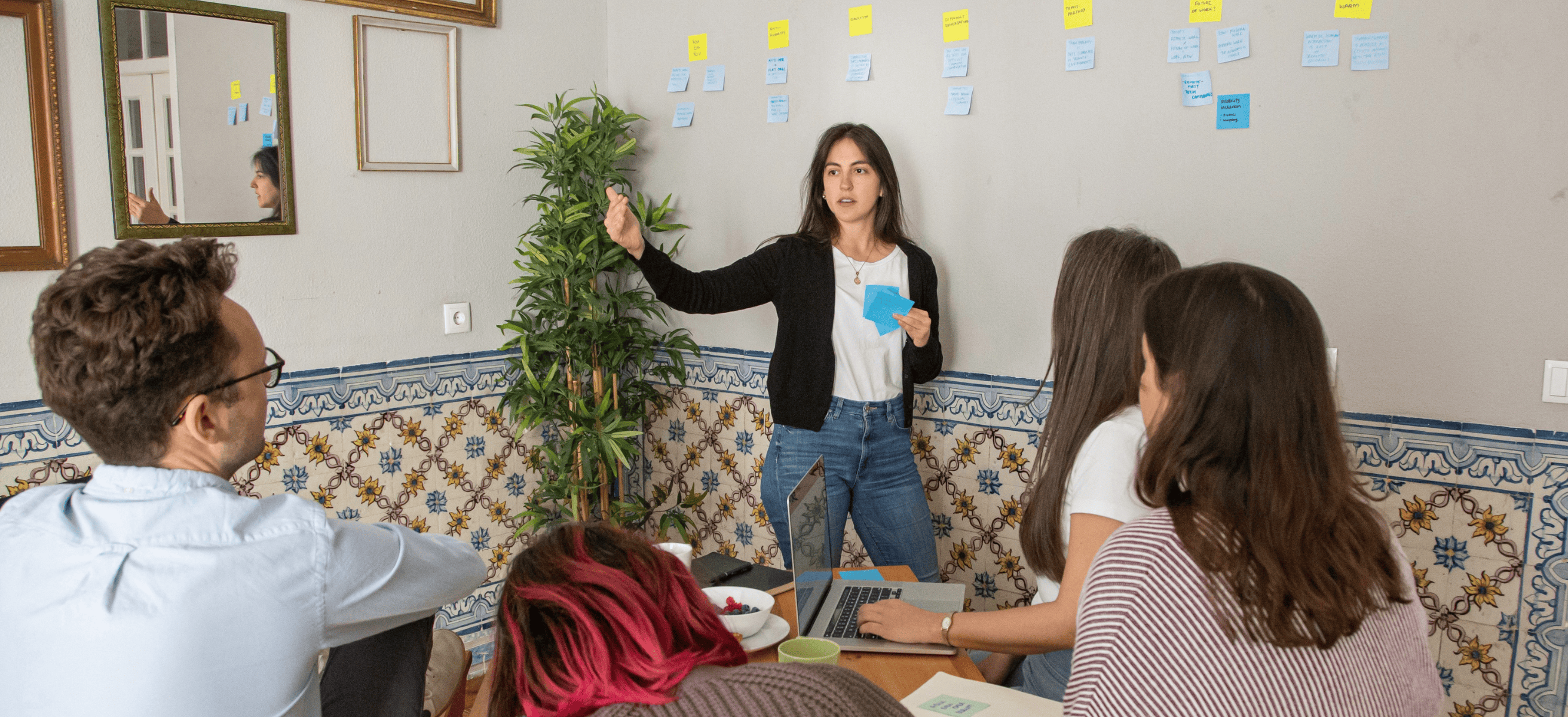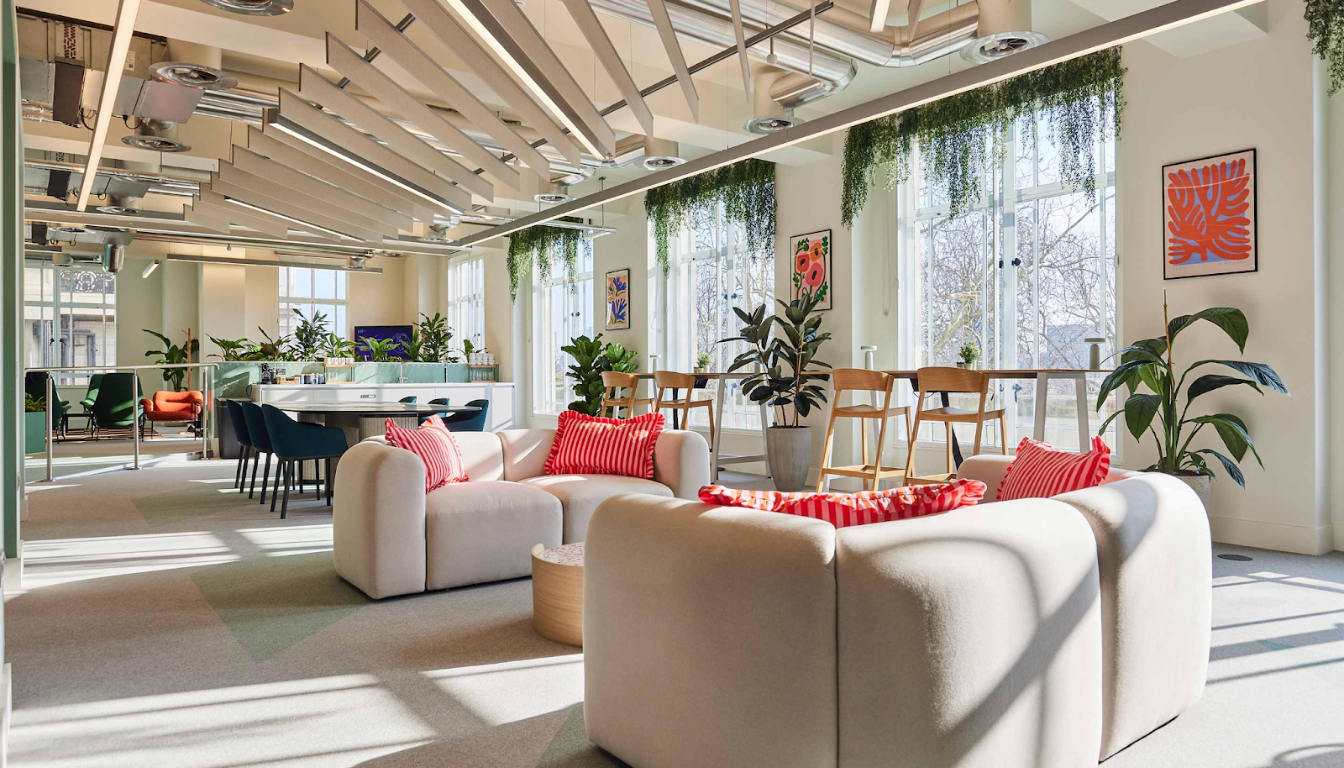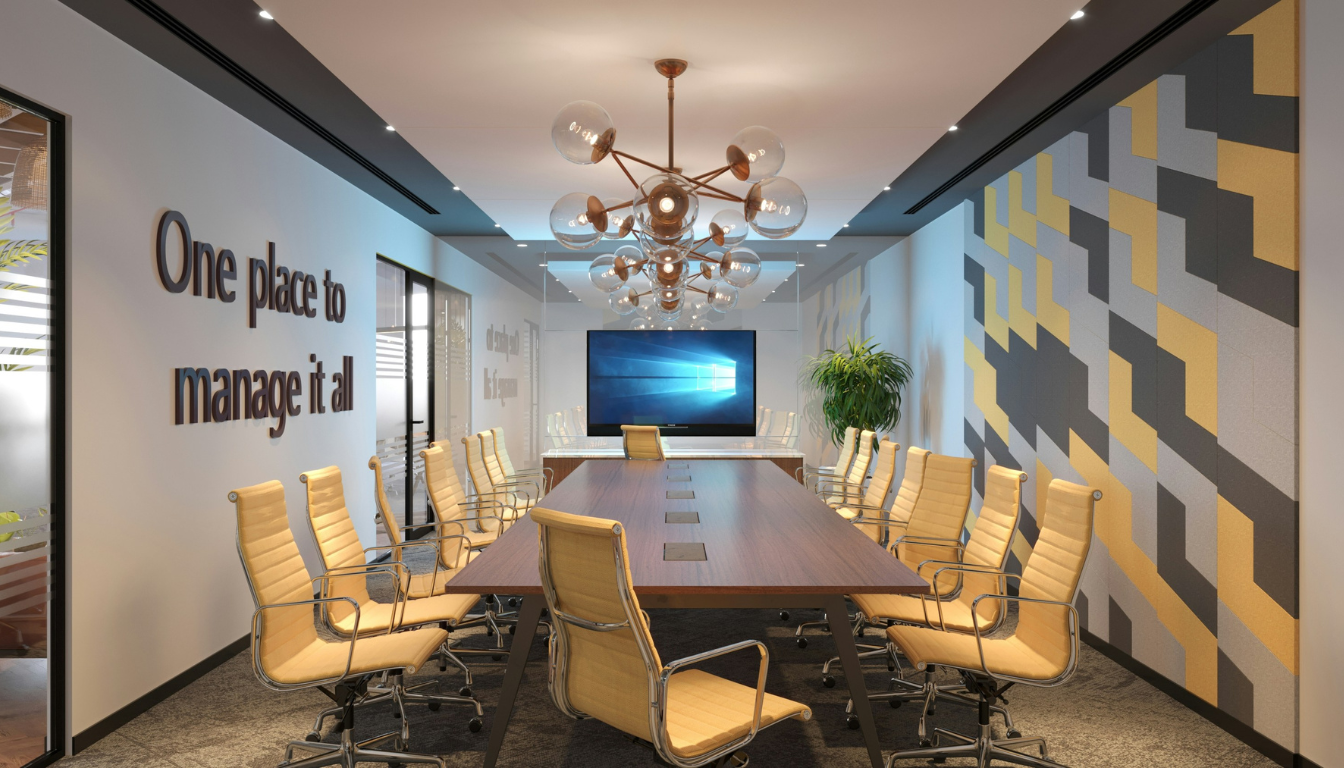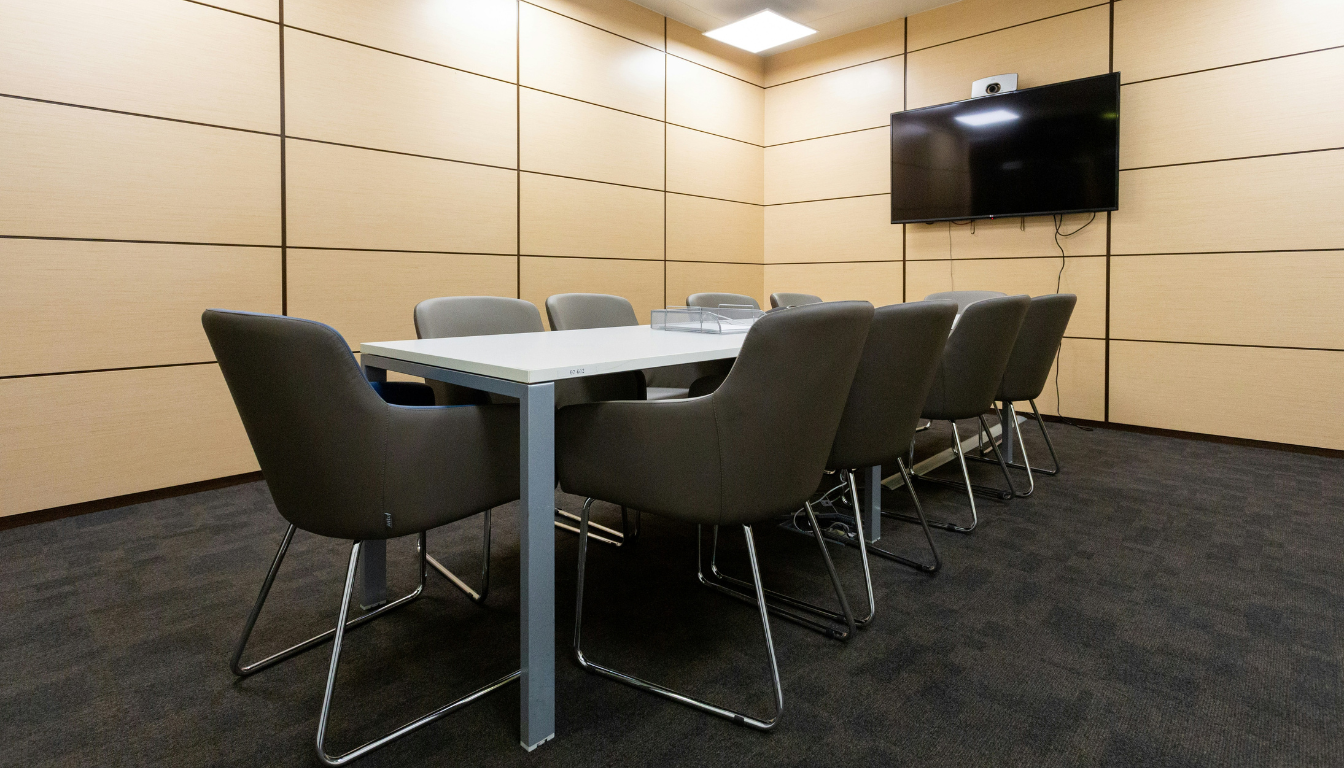Boosting Productivity in the Creativity Workplace: Top Tips and Benefits

How can you foster creativity in the workplace? A creative workplace boosts productivity and innovation. In this article, discover why creativity matters, its benefits, and practical ways to build a creative work environment.
Key Takeaways
- Creativity is essential for success across industries, driving innovation and helping businesses navigate complex challenges.
- A creative workplace enhances productivity, attracts top talent, and improves employee retention by fostering a supportive and innovative culture.
- Leadership plays a crucial role in nurturing creativity, emphasizing trust and emotional intelligence to create an environment where employees feel safe to express their ideas.
Why Creativity is Crucial in the Workplace

Creativity is a crucial element for success in all industries. In today’s complex and dynamic business landscape, it generates innovative solutions and helps overcome cognitive fixedness, a common barrier to growth. Creative thinking helps businesses tackle complex challenges like cost-cutting and process evaluations by finding unique and practical creative solutions through creative problem-solving. Creative thinkers are essential in this process, especially when addressing a creative problem.
Moreover, creative employees play a pivotal role in driving innovation. They constantly seek new methods, ask critical questions, and experiment with innovative ideas, thereby improving processes and enhancing efficiency. To stay competitive, organizations must generate unique and original employee ideas, especially those from a creative company, including insights from a creative person and creative people.
The significance of creativity extends beyond specific roles or industries. It is recognized as the top skill in the world, crucial for job seekers and business success alike. From marketing and product development to human resources and customer service, there is room for creative approaches in nearly every aspect of workplace operations. Fostering creativity allows organizations to unlock their full potential and sustain growth.
Key Benefits of a Creative Workplace

A creative workplace offers numerous benefits that extend far beyond just innovation. These benefits include:
- A boost in productivity.
- Encouraging creative thinking helps employees devise inventive solutions to streamline processes and revive stagnating operations.
- Dedicating time to creative thinking enhances team productivity.
- Combating the monotony of daily work life.
Creative workplaces positively impact recruitment and retention. Potential employees are attracted to environments that foster creativity and innovation, making it easier for companies to attract top talent. Positive workplace experiences are often shared with job candidates, enhancing the employer’s brand and reputation. Furthermore, increased loyalty and investment in their jobs lead to better retention rates among employees and help companies retain employees.
Workplace design plays a significant role in fostering creativity in the workplace through design thinking. Elements like artwork, task lighting, and office plants can enhance team culture and inspire creativity.
Leadership is also crucial; leaders who blend emotional intelligence with courage create an environment conducive to creativity by promoting psychological safety and allowing risk-taking. Fostering creativity at work builds a foundation for innovation, job satisfaction, and overall productivity.
Designing an Innovative Environment

Nurturing creativity in the workplace requires thoughtful approaches to workspace flexibility and functionality beyond aesthetic choices. A flexible ecosystem of workspaces lets individuals choose environments that suit various creative processes. Movable screens and barriers, for instance, enable employees to customize spaces that inspire their best work.
Artwork, task lighting, office plants, and sit-stand desks can significantly boost creativity in office spaces. These elements not only make the office more visually appealing but also create a stimulating atmosphere that encourages creative thinking. Tools and surfaces for idea sharing support the collaborative nature of creative work, facilitating brainstorming and idea generation.
Open-space designs further enhance creativity and collaboration by facilitating interaction among teammates. Wellness rooms and tech-free zones provide mental breaks, rejuvenating workers and boosting creative productivity. Incorporating nature, like office plants, purifies the air and brings tranquility, enhancing office space creativity.
An innovative environment cultivates a culture of creativity, fostering innovation, driving productivity and innovation.
Encouraging Creative Thinking Among Teams
Creating a judgment-free zone where all ideas generated are welcomed and valued encourages creative thinking among teams. Effective brainstorming sessions ensure every team member has a voice, fostering an inclusive environment for innovative solutions. Encouraging divergent thinking helps people step outside their comfort zones and challenge established practices, stimulating creative thinking.
Diversity within teams fosters creativity by:
- Bringing different perspectives and combating groupthink.
- Enabling collaborative environments where teams work towards common goals, facilitating innovation.
- Implementing knowledge-sharing practices like lunch-and-learn sessions or workshops that provide platforms for employees to share skills and insights, enhancing professional growth and creativity.
Giving team members project ownership and encouraging them to take social risks, like voicing unconventional ideas, can significantly boost creativity. Employees who feel safe to express their ideas and are motivated to find unique potential solutions are more likely to engage in innovative problem-solving methods. A creative environment helps teams generate a solution and adapt to challenges, boosting productivity and innovation.
The Role of Leadership in Fostering Creativity
Leadership is crucial in fostering team creativity. Emotionally intelligent leaders enhance creativity and innovation by:
- Understanding and managing team emotions
- Acknowledging and addressing team feelings to create a supportive atmosphere conducive to creative thinking
- Balancing empathy with accountability to prevent decision paralysis and promote growth
Trust in staff is crucial for fostering a supportive environment. When leaders trust their team, it enhances morale and creates a happier, more productive workforce. Providing autonomy fosters creative thinking and a sense of ownership, allowing employees the freedom to explore new ideas and take risks without fear of failure.
Promoting an environment where creativity is encouraged and valued helps business leaders promote creativity, drive innovation, and productivity within their organizations.
Offsite Experiences to Spark Creativity

Off-site experiences are powerful for sparking creativity and strengthening team bonds. Company retreats with welcome parties and engaging team building exercises can enhance team spirit and collaboration. Outdoor adventures like hiking and kayaking provide a refreshing break from the usual work environment and help strengthen team bonds.
Creative workshops like painting and jewelry making promote individual expression while fostering collaboration among team members. For remote teams, virtual retreats with interactive activities like online escape rooms and virtual trivia effectively engage participants and spark creativity with creative ideas.
Offsite retreats offer a change of scenery that can inspire fresh ideas and boost team creativity. Partnering with companies like Offsite, which designs retreats to inspire fresh thinking, can further enhance these experiences. Engaging in off-site activities helps teams unlock their creative potential and bring new energy to their everyday work life.
Embracing Risk-Taking and Learning from Failure
Risk-taking is essential for innovation and growth, enabling organizations to break new ground and adapt to changing environments. Viewing failure as a learning opportunity and embracing risk-taking encourages employees to innovate without fear, boosting creativity and problem solving abilities. A culture that rewards experimentation and supports risk-taking fosters an environment where employees feel safe to share ideas and take creative risks.
Learning from failure fosters innovation and builds a resilient workforce adaptable to challenges. Encouraging and supporting employees in taking risks creates a culture of continuous learning and improvement. This approach drives creativity and enhances overall productivity and innovation within the organization.
Practical Tips for Cultivating Creativity Daily

Cultivating daily creativity requires intentional practices and routines, such as:
- Scheduling daily time for creative thinking and brainstorming to significantly boost workplace creativity.
- Engaging in creative processes like focus exercises or meditation to enhance concentration and improve creative thinking.
- Taking short breaks when struggling to focus helps recharge the mind and cultivate creativity.
Daily reading and writing are powerful tools for fostering creativity and facilitating learning. Getting outside for a walk or spending time in nature can generate ideas, provide inspiration, and relax the mind, enhancing creative thinking.
Structured routines help teams build habits that foster creativity over time, encouraging independent work and idea generation without supervision. Implementing these practical tips helps employees cultivate a creative mindset and drive innovation in their everyday work life to solve problems, improve processes, and develop smart solutions.
Summary
In summary, fostering creativity in the workplace is essential for innovation, problem-solving, and team engagement. A creative work environment boosts productivity, enhances recruitment and retention, and drives overall business success. Companies like Offsite can offer expertly curated experiences and retreats that foster collaboration, spark innovation, and strengthen team dynamics outside the traditional office setting.
Leaders play a crucial role in fostering creativity, and off-site experiences can further inspire fresh ideas. Implementing practical tips for cultivating creativity daily can help employees maintain a creative mindset and drive continuous innovation. Embrace creativity in your workplace, and watch as it transforms your team’s productivity and success.
FAQs
- Why is creativity important in the workplace?
Creativity is vital in the workplace as it fosters innovative solutions and addresses complex challenges, ultimately enhancing employee motivation and improving efficiency. Embracing creativity can lead to significant advancements within an organization.
- How can leaders foster creativity in their teams?
Leaders can effectively foster creativity by cultivating emotional intelligence, offering a supportive environment, granting autonomy, and promoting risk-taking and open idea-sharing within their teams. This approach encourages innovation and enhances overall team dynamics.
- What are some benefits of a creative workplace?
A creative workplace significantly boosts productivity and enhances team culture, leading to improved recruitment and retention. Ultimately, it drives business success through innovation and higher job satisfaction.
- How can offsite experiences spark creativity?
Offsite experiences can significantly spark creativity by offering a change of scenery and stimulating activities that foster new ideas and enhance team dynamics. This refreshing environment often leads to innovative thinking and collaboration.
You may also like
Unique spaces for your next offsite
Find distinctive venues for your upcoming corporate retreat.
Stay Updated with Our Insights
Get exclusive content and valuable updates directly to you.







